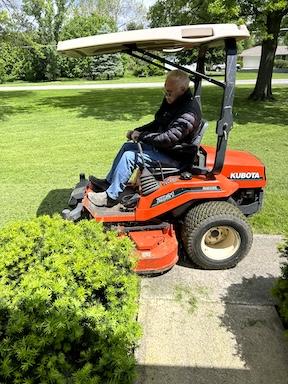ZTR Has A Golf Cart Roof

Larry Wood from Waldo, Ohio, wanted a roof for his Kubota ZD21 mower. He got a roof from a golf cart from a friend and decided to use it on his Kubota.
“I bolted the roof to the original tool bar. It turned out great,” says Wood. He noted that he saw used ones available online for as little as $50.
The golf cart roof is lightweight and provides good shade. Wood noted that it only takes four bolts to remove the roof.
